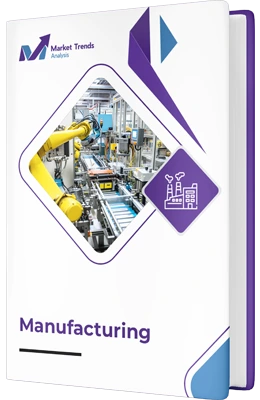
The 3D Ceramic Printer Market size was valued at USD 150 Million in 2024 and is projected to reach USD 480 Million by 2033, growing at a Compound Annual Growth Rate CAGR of 15.2% from 2025 to 2033. This robust growth is driven by advancements in additive manufacturing technologies, increasing adoption across aerospace, healthcare, and industrial sectors, and rising demand for high-precision ceramic components. The expanding application scope and ongoing innovations in ceramic materials are further fueling market expansion, positioning 3D ceramic printing as a critical enabler of industry-specific innovations and sustainable manufacturing practices.
A 3D Ceramic Printer is an advanced additive manufacturing device designed to produce complex, high-precision ceramic components layer-by-layer. Utilizing specialized ceramic inks or powders, these printers employ techniques such as binder jetting, stereolithography, or material extrusion to fabricate intricate geometries that are difficult or impossible to achieve through traditional manufacturing methods. The technology offers exceptional material properties, including high thermal stability, corrosion resistance, and biocompatibility, making it ideal for applications in aerospace, healthcare, dental, and industrial sectors. As the industry evolves, 3D ceramic printers are increasingly integrated with smart automation and Industry 4.0 solutions to enhance productivity and design flexibility.
The 3D ceramic printer market is witnessing transformative trends driven by technological innovation and industry-specific demands. The integration of AI and IoT for real-time process monitoring is enhancing precision and operational efficiency. Growing adoption in high-value sectors such as aerospace and healthcare is emphasizing the need for customized, complex ceramic parts. Sustainability initiatives are encouraging the development of eco-friendly ceramic materials and energy-efficient printing processes. Additionally, the convergence of 3D printing with traditional manufacturing is fostering hybrid production models that optimize cost and speed.
The accelerating adoption of 3D ceramic printing is primarily driven by the demand for lightweight, durable, and high-performance components across various industries. The ability to produce complex geometries with minimal waste and reduced lead times offers significant cost advantages and design flexibility. Increasing investments in additive manufacturing R&D, coupled with supportive regulatory frameworks, are further propelling market growth. The rising need for customized solutions in healthcare, dental, and industrial applications is also a critical factor fueling demand. Moreover, the push for sustainable manufacturing practices aligns with the development of eco-friendly ceramic materials and energy-efficient printing technologies.
Despite promising growth prospects, the 3D ceramic printer market faces several challenges that could hinder its expansion. High initial capital investment and operational costs remain significant barriers for small and medium-sized enterprises. The limited availability of advanced ceramic materials with consistent quality and properties constrains broader adoption. Additionally, the complexity of ceramic printing processes necessitates specialized expertise, which can limit workforce readiness. Regulatory hurdles and stringent quality standards, especially in healthcare and aerospace, pose compliance challenges. Lastly, the relatively slow printing speeds compared to traditional manufacturing methods may impact large-scale production viability.
The evolving landscape of 3D ceramic printing presents numerous opportunities driven by technological innovation and industry needs. The development of new, high-performance ceramic materials tailored for additive manufacturing can unlock applications in extreme environments. Expansion into emerging markets such as dental, jewelry, and consumer electronics offers lucrative growth avenues. The integration of AI, machine learning, and IoT can optimize process efficiency and quality control, opening pathways for smart manufacturing. Additionally, strategic collaborations between material suppliers, OEMs, and research institutions can accelerate innovation and market penetration. The push for sustainable manufacturing also creates opportunities for eco-friendly ceramic solutions that meet environmental standards globally.
Looking ahead, the 3D ceramic printer market is poised to revolutionize manufacturing paradigms by enabling the production of highly complex, customized, and high-performance ceramic components across industries. The integration of smart technologies will facilitate real-time process monitoring, predictive maintenance, and adaptive manufacturing workflows. In healthcare, personalized implants and dental restorations will become standard, driven by biocompatible and bioactive ceramic materials. Aerospace and automotive sectors will leverage lightweight, durable ceramic parts for enhanced performance and fuel efficiency. The convergence of digital design, AI, and advanced materials will foster a new era of innovation, making 3D ceramic printing a cornerstone of Industry 5.0 and sustainable manufacturing ecosystems.
3D Ceramic Printer Market was valued at USD 150 Million in 2024 and is projected to reach USD 480 Million by 2033, growing at a Compound Annual Growth Rate CAGR of 15.2% from 2025 to 2033.
Demand for lightweight, high-strength ceramic components in aerospace and automotive sectors, Growing focus on customization and complex geometries in healthcare and dental industries, Technological advancements reducing production costs and cycle times, Supportive government policies and industry standards promoting additive manufacturing, Rising consumer and industrial demand for sustainable and eco-friendly manufacturing, Expansion of Industry 4.0 integration for smart manufacturing solutions.
The Top players operating in the 3D Ceramic Printer Market 3D Systems Corporation, ExOne Company, Formlabs Inc., Renishaw plc, EOS GmbH, SLM Solutions Group AG, Desktop Metal Inc., XYZprinting Inc., Markforged Inc., Arcam AB (GE Additive), Digital Metal (Part of Höganäs Group), LiqCreate, Organovo Holdings Inc., EnvisionTEC GmbH, Intamsys Technology Co., Ltd.
3D Ceramic Printer Market is segmented based on Material Type, Technology, End-Use Industry And Geography.
The sample report for the 3D Ceramic Printer Market can be obtained on demand from the website. Also, the 24*7 chat support & direct call services are provided to procure the sample report.